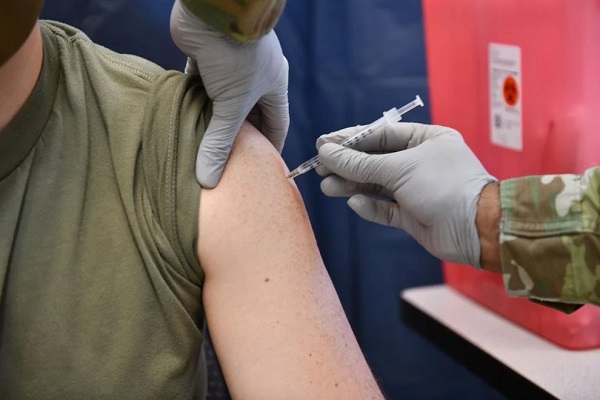Also Interesting
Ten of History’s Biggest Slot Machine Wins

The slot machine—one of the most popular casino games ever invented. People around the world dream of seeing those icons line up and hitting the jackpot. And for some people, the dream has come true. As expected, the majority of the biggest wins ever happened in the capital city of gambling, Las Vegas. Believe it or not, also some of the biggest slot machine jackpots that have been paid out have come from online casinos. You can try out Jackpot slots and, who knows, you could also win the Jackpot like the people below.
10. $14.3 Million – won at Rampart Casino in Las Vegas
The tenth place on the list, but certainly not a number to laugh at, was won back in 2013, by a player who has chosen to remain anonymous.
This player spent only 20 dollars on a slot machine in the casino before hitting the jackpot worth 14.3 million dollars. Also, it is worth mentioning that the player donated a big chunk of the prize money to charity.
9. $17.3 Million – won at M Resort in Henderson
The next spot on our list comes from a woman, ironically from Las Vegas, who won a massive 17.3 million dollars in a casino M Resort located in Henderson.
The way she won this prize is by using some free credits that she had left on a slot machine. This shows that free credits could turn out to be the difference between a loss and a huge win.
8. $20.8 Million – won Online
The 8th biggest jackpot win comes from an online casino. It was won in 2013 by Jon Hayward, who was a British soldier. The most incredible thing however is that he only spent 25p before hitting this huge jackpot. He won a whopping 13.2 million pounds, which, at the time, was worth around 20.8 million dollars. It truly is unbelievable
7. $21.1 Million – won at Cannery Casino & Hotel in Las Vegas
A man by the name of Elmer Sherwin hit the jackpot worth 21.1 million dollars in 2005. But the most unbelievable thing about this win is that this man won a jackpot of 4.6 million dollars in 1989 at the Mirage Casino. The same man won 2 separate jackpots 16 years apart.
6. $21.3 Million – won at Caesars Palace in Las Vegas
An anonymous 49-year-old man won 21.3 million dollars in 1999 at what is probably the most famous casino in the world, Caesars Palace. After just spending 10 dollars he hit the massive jackpot.
5. $22.6 Million – won at Bally’s in Las Vegas
The next entry was won in 2002 by Johanna Heundl, who won the jackpot after spending 170 dollars. She was 74 at the time and managed to win before breakfast.
4. $23.6 million – won at PAF.com, Online
This win came from an online casino back in 2013. It was won by a Finnish player who only spent 25 cents before hitting the jackpot worth 17.8 million euros which, at the time, was approximately 23.6 million dollars.
3. $27.6 Million – won at the Palace Station Casino in Las Vegas
The third spot is taken by a retired woman who won the jackpot in 1998.
She spent more than she initially planned but it paid off in the end after winning 27.6 million dollars.
2. $35 Million – won at the Desert Inn in Las Vegas
The second spot belongs to Cynthia Jay Brennan. The 37-year-old hit the massive jackpot of just under 35 million dollars in 2000. This happened at the Desert Inn, which back in the day used to be in Wynn Las Vegas.
1. $39.7 Million – won at the Excalibur Casino in Las Vegas
The largest jackpot ever in history was won in 2003 at the Excalibur Casino. After spending 100 dollars the player hit the jackpot which was worth 39.7 million dollars. This truly incredible win is still the largest ever.
Some dreams come true, as we can see from these players who won incredible amounts of money. Some of them probably didn’t imagine they would win over a couple of thousand dollars, but as it turns out they won millions instead.
Also Interesting
Mortgage Mayhem: How Rising Interest Rates Are Squeezing Alberta Homeowners

As interest rates continue to climb, Alberta homeowners are facing a financial reckoning. With approximately 1.2 million Canadians set to renew their mortgages in 2025, many of whom secured loans during periods of historically low interest rates, a significant number are anticipating higher payments upon renewal. This financial strain is poised to impact households across the province, leading to tough financial choices and lifestyle adjustments.
The real estate market in Alberta has long been a beacon of affordability compared to cities like Toronto and Vancouver. However, with rising interest rates, even this relative advantage is beginning to erode. Homeowners who took on variable-rate mortgages or secured loans during historically low-interest periods are now feeling the squeeze. Many face mortgage payments that could increase by hundreds, if not thousands, of dollars each month.
Tough Choices: Cutting Back on Essentials and Luxuries
With nearly 60 percent of mortgage holders in the province expecting higher payments upon renewal in 2025, financial strain is set to hit households hard. According to recent reports, 35 percent of homeowners anticipate a slight increase, while 25 per cent brace for a significant hike. For many, this means tough financial choices and lifestyle adjustments.
Among those expecting a rise in mortgage payments, a significant portion anticipates financial pressure on their household. In response, Albertans are slashing discretionary spending, with many cutting back on non-essentials. Travel budgets are taking a hit, with some reducing or eliminating trips altogether. Even more concerning, others say they will have to trim spending on essentials like groceries and gas to stay afloat.
The strain extends beyond just the affected homeowners. Local businesses, especially those in retail, hospitality, and tourism, are likely to feel the ripple effects. When a significant portion of the population pulls back on spending, economic activity slows, and small businesses may struggle to stay profitable.
Financial advisors suggest that those facing increased mortgage payments should revisit their household budgets, explore refinancing options, and consult with their lenders to see if adjustments can be made.
The Alberta Economic Factor: Boom, Bust, and Mortgage Stress
Unlike other regions in Canada, Alberta’s economy remains tightly linked to the oil and gas sector, leading to greater volatility in household incomes. While wages can be high, employment remains unpredictable, making financial resilience more difficult to maintain. This economic unpredictability has always been a challenge for residents. When the oil industry booms, wages surge, employment rates rise, and homeownership becomes more accessible.
But during downturns, layoffs become common, and homeowners can find themselves struggling to keep up with payments. This cycle makes high mortgage payments especially daunting for Albertans, many of whom may not have significant emergency savings to weather financial storms.
In cases where savings run out, some homeowners may need alternative financial solutions, such as a line of credit from Fora Credit, to cover emergency expenses and avoid missing payments.
A Housing Shift: Downsizing and Relocating
For those struggling to manage higher mortgage payments, some are considering drastic moves. Downsizing or relocating to more affordable areas has become a viable option for many Albertans. Homeowners are exploring opportunities to reduce monthly carrying costs, whether by moving to smaller homes or shifting to regions with lower real estate prices.
There is also a growing interest in multi-generational living arrangements. Families are pooling resources to purchase homes together, enabling them to split mortgage costs and share living expenses. While this approach has been common in other parts of the world, it is becoming an increasingly attractive solution in Alberta as mortgage affordability diminishes.
What’s Next for Alberta’s Housing Market?
As the Bank of Canada continues to grapple with inflation, interest rates may remain elevated for the foreseeable future. This could further strain homeowners and cool Alberta’s once-hot housing market. Higher mortgage rates make it more difficult for new buyers to enter the market, leading to decreased demand and potentially stabilizing or reducing home prices in some areas.
Experts suggest that while home values may soften slightly, a full market crash is unlikely. Alberta’s relatively low housing costs compared to major metropolitan areas in Canada provide some buffer against drastic devaluations.
Still, for those facing renewal in 2025, preparation is key. Financial advisors recommend stress-testing mortgage payments, meaning homeowners should calculate potential increases and adjust their budgets accordingly.
How to Prepare for Rising Mortgage Costs
Homeowners who anticipate higher payments should take action now rather than waiting until their renewal date arrives. Some strategies to consider include:
● Refinancing: If possible, homeowners should explore refinancing options that might offer lower rates or extended amortization periods to reduce monthly payments.
● Cutting Expenses: Budget adjustments, such as reducing discretionary spending and optimizing essential costs, can help cushion the impact of higher mortgage payments.
● Increasing Income: Seeking additional income sources, whether through side gigs, renting out portions of their home, or negotiating for a salary increase, can help mitigate financial strain.
● Seeking Professional Advice: Consulting with mortgage brokers, financial advisors, and lenders can provide tailored solutions for those struggling to meet their new financial obligations.
For Albertans facing mortgage renewal in 2025, now is the time to assess financial options, seek expert advice, and prepare for a potentially rocky road ahead. While the challenge is significant, proactive planning and smart financial decisions can help homeowners navigate this difficult period and maintain stability despite rising interest rates.
Also Interesting
Exploring Wildrobin Technological Advancements in Live Dealer Games

In the rapidly evolving world of online gaming, Wildrobin casino stands out for its innovative approach to live dealer games, setting new standards in user experience and technological advancements. Wildrobin continues to refine these features for a truly immersive setting.
Live dealer games have become a cornerstone of the online casino industry, offering players an immersive experience that closely mirrors the excitement of a physical casino. This format combines the convenience of online gaming with the authenticity of real-time interaction, facilitated by professional dealers and high-definition streaming technology.
The Rise of Live Dealer Games
The evolution of live dealer games has been marked by significant technological milestones. From basic single-camera setups to sophisticated multi-angle broadcasting systems, the industry has witnessed remarkable growth.
Modern platforms now utilize advanced OCR (Optical Character Recognition) technology to instantly digitize physical card movements and game outcomes, ensuring complete transparency and real-time data transmission to players worldwide. Wildrobin fully embraces these technologies to enhance player trust.
Technological Innovations at This Casino
Wildrobin casino has been at the forefront of integrating cutting-edge technology into its live dealer offerings. By leveraging advancements in extended reality and real-time data processing, the casino enhances the gaming experience, providing players with seamless and interactive gameplay. These innovations improve visual and audio quality and ensure a more engaging and realistic environment for users. Moreover, Wildrobin pursues continuous experimentation with cutting-edge solutions to stay ahead of industry trends.
The integration of sophisticated bandwidth optimization techniques and adaptive streaming technologies ensures uninterrupted gameplay across various devices and network conditions. This technical infrastructure allows for seamless scaling of concurrent users while maintaining high-quality video streams and minimal latency, crucial factors in delivering an authentic casino experience to players regardless of their location.
Enhancing User Experience
The focus on user experience is evident in Wildrobin casino’s commitment to continuous improvement. The implementation of advanced algorithms and AI-driven analytics allows for personalized gaming experiences, catering to individual player preferences and behaviors. This approach increases player satisfaction and fosters a loyal customer base.
Advanced chat systems and interactive features create a social atmosphere where players can interact with dealers and fellow participants in real-time. The implementation of customizable user interfaces allows players to adjust their viewing angles, table statistics, and betting options according to their preferences. These personalization options, combined with intuitive navigation and seamless payment processing, contribute to a more engaging and user-friendly gaming environment.
The Future of Live Dealer Games
As technology continues to evolve, Wildrobin casino is poised to lead the way in the next generation of live dealer games. With ongoing research and development, the casino aims to integrate even more sophisticated technologies, such as virtual reality and augmented reality, to further blur the lines between virtual and physical gaming environments.
This commitment to innovation ensures that Wildrobin casino remains a key player in the online gaming industry. Wildrobin is also dedicated to implementing breakthroughs that will shape the future of immersive casino entertainment.
-

 Also Interesting1 day ago
Also Interesting1 day agoMortgage Mayhem: How Rising Interest Rates Are Squeezing Alberta Homeowners
-

 2025 Federal Election1 day ago
2025 Federal Election1 day agoConservative Party urges investigation into Carney plan to spend $1 billion on heat pumps
-

 Alberta2 days ago
Alberta2 days agoAlberta’s embrace of activity-based funding is great news for patients
-

 2025 Federal Election1 day ago
2025 Federal Election1 day agoCommunist China helped boost Mark Carney’s image on social media, election watchdog reports
-

 COVID-192 days ago
COVID-192 days agoMassive new study links COVID jabs to higher risk of myocarditis, stroke, artery disease
-

 2025 Federal Election1 day ago
2025 Federal Election1 day agoCorporate Media Isn’t Reporting on Foreign Interference—It’s Covering for It
-

 2025 Federal Election1 day ago
2025 Federal Election1 day agoFifty Shades of Mark Carney
-

 Also Interesting1 day ago
Also Interesting1 day agoExploring Wildrobin Technological Advancements in Live Dealer Games




